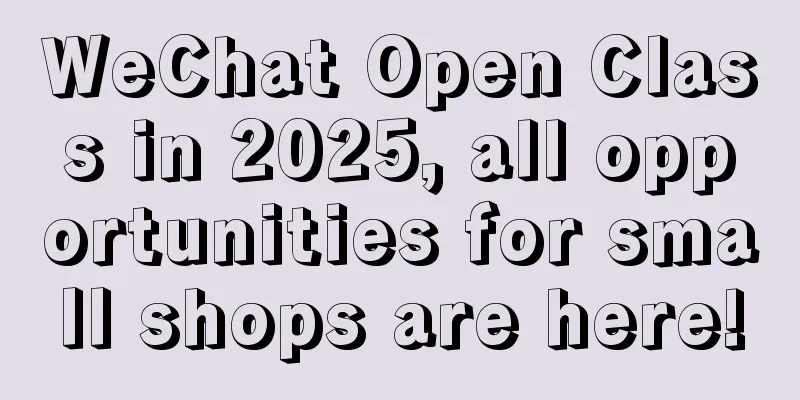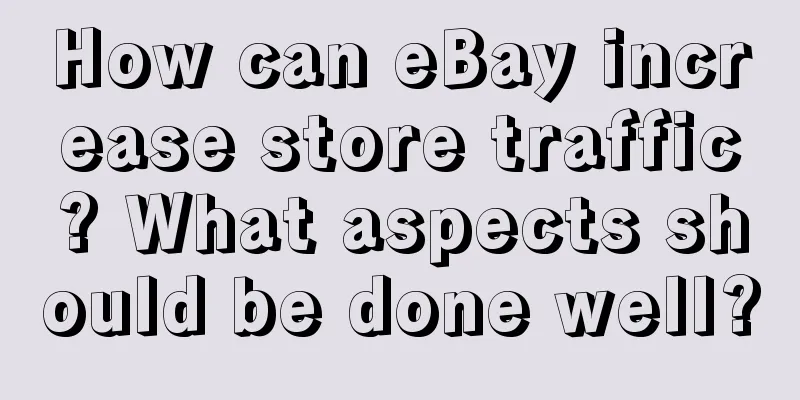Pinduoduo offers high click-through rate and conversion rate

There are two words, I wonder if you know them: CVR and CTR. Those who like to speak Internet jargon probably know that these two words are conversion rate and click-through rate. I know a lot of Internet jargon like this, such as cpd, cpt, cps, gtr, etc. Knowing what these words mean is not important. What we operators need to know is the logic behind these words, and what to do to improve these indicators. This is valuable. The reason why this article talks about click-through rate and conversion rate separately is because I found that when doing Pinduoduo, opening a through train or playing natural flow, these two indicators are the decisive factors. If your click-through rate and conversion rate are extremely high, believe me, you will definitely be able to thrive on Pinduoduo. The problems I encountered with the projects that were not put into production were not caused by the bid, but by the poor basic data of the link itself. If the basic data was improved, I could find a kindergarten kid to drive the through train. You should arrange your working time reasonably and spend more time on basic optimization, so that your investment and return will be proportional. 1. Why do we need to improve click-through rate and conversion rate?Before I share it officially, let me first talk about the underlying logic of Pinduoduo's recommendation. You should know that each link and each indicator has a weight, such as GMV weight, click weight, price weight, DSR weight, conversion rate weight, dispute rate weight, etc. The improvement of each indicator data will increase your link weight, thereby improving the ranking of the link. Among them, the weight of click-through rate and conversion rate is particularly high. Pinduoduo started with low prices, and users have the impression of low prices. As long as the price of the product is low, the conversion rate will definitely not be low. The weight of the product will naturally not be low. I put up low-priced products and did not drive, and there were natural orders every day. I raised the selling price, and there were no orders. Why? The conversion rate dropped, the weight dropped, the ranking dropped, and then the number of orders dropped. The logic is this logic. In fact, it is very simple. Improve these two indicators and the data will take off. 2. How to improve click-through rate?Everyone probably knows the way to increase click-through rate subconsciously, such as making a main picture and testing. I also know the process is like this, but how to do it and how to test it to achieve the effect? My idea is to learn from it first. When you are promoting a product, search for similar products first, and then filter the sales rankings. Click on the top-ranked links to see if there is a ranking list. If there is, click on the ranking list. Click on the ones that are very similar to your product, collect them, and then take screenshots of all the main pictures and do an analysis. After collecting, go to the homepage of the APP and pull down, and several products of the same type will pop up. All the products pushed by the system have good current data performance. Since these links may not necessarily have much sales, it means that the GMV weight is not high. The reason they are recommended is either because of good basic data and high click-through rate and conversion rate, or because the bids are very high, starting at 99. I wonder if anyone here has done this before? After getting the main pictures of these competing products, we need to carry out the next step of analysis. For example, if I am promoting a small fan, I will analyze what the selling point of other people’s small fan main pictures is, whether it is about price or effect, and how it is presented. There is a small fan that emphasizes the effect of cooling. How did they make the main picture? They directly put a scene similar to that of athletes climbing Mount Everest, so that people would think, "It's really cool, buy it" when they see the picture. The actual product is no different from an ordinary small fan, except that the scene is replaced. This kind of picture has an elegant name: micro-horse flat. My opinion is that within the scope of compliance and law, everyone can be free to play. When I draw a picture, I will modify the two-pack to buy one get one free, and then write in big words on the main picture: buy one get one free. Then make a low-priced SKU to attract traffic. Users will think that your product is so cheap and you are also offering a buy one get one free offer. They will most likely click in to see if my click-through rate has increased. Users on Pinduoduo are particularly sensitive to prices. If you are selling standard products, you should also make low-priced SKUs to attract traffic. This will be very helpful in improving click-through rates. As for improving click-through rates, my opinion is that everything within the user's sight must be perfect. What do users see? The main picture, the first few words of the title, the price, the number of orders, and the tags. The main picture is one aspect, which has a greater impact, and other areas also need to be optimized, such as the number of orders. After a wave of declines in May, the click rate was almost halved, and the link weight dropped a lot. Before finding a new S-order method, I can only raise the bid to ensure the number of orders. 3. How to improve conversion rate?This topic is long. The reasons for the low conversion rate of the links I encountered are nothing more than two: the wrong audience or the poor material. The conversion rate of the links in our activities is generally lower than that of the direct train, which is caused by the entry of many non-precise users. There is a trade-off here, whether to focus on crowd tags or order volume. My opinion is that in the early stage of linking, we should improve the conversion rate data, and accurate users are the first priority. When the link reaches the explosive period, we can consider amplifying the crowd tags and harvesting crazily. You can think about the crowd slowly, and focus on the material part. When a user enters the landing page, his order process is as follows: first look at the main picture, then look at the comments, then look at the SKU, and finally look at the details. The order does not have to be exactly like this, just optimize according to this order. There are 10 main pictures. The first one attracts clicks. The second to fourth pictures can be used as main pictures. Because every picture on the whole site is exposed, it is easier to get traffic if you put more main pictures. The fifth to ninth pictures are scenes, details, effects, endorsements and other pictures that prove the selling points of the product. The main picture is not placed randomly. You should put yourself in the buyer's shoes and think about how the buyer thinks when buying this thing. Then arrange the main picture according to the buyer's thinking process. Then there are the comments. The comments should not be just one sentence: This product is really good. It's meaningless. You have to talk about details. There is a saying in psychology: the more complete the details of the story, the more credible it is. As for how to get buyers to leave detailed reviews, everyone can figure it out. There is also SKU, which is very important. For the same product, if I want to promote a single bottle, I write the SKU of the single bottle as: hot-selling product. If I want to promote two bottles, I write the SKU of the two bottles as: special offer package. Users will follow my guidance to place orders for the corresponding SKU. There are endless possibilities for SKU names: you can set a tiered price to guide users to buy high-priced SKUs (which are actually the same product); you can talk about functions so that users can judge for themselves which SKU to buy; you can talk about activities, such as giving away 30 or 60 units, to guide users to order the SKU they want. Users can be guided, it all depends on how you design it. There are also details, product Q&A, store logos, etc. (the conversion rate of black-label stores is indeed higher than that of ordinary stores). The operating idea of e-commerce is very simple, which is mentioned above. Wherever the user's eyes can reach, the score must be above 95. In this way, your conversion rate is guaranteed, and the system will continuously bring you traffic. 4. FinalImproving click-through rate and conversion rate is much more difficult than driving a car. Driving a car is nothing more than four operations: price increase, price reduction, opening and closing. To improve click-through rate and conversion rate, you must not only analyze competitive products and user needs, but also understand design, cross-departmental communication, and be able to read data and know how to measure high-data materials. Because the threshold for improving these two data is not low, most people will avoid the important and focus on the trivial, which is not good. The real ability of e-commerce operation is not driving, but the foundation for producing awesome data. Author: Tiger Talks Operations Source: WeChat official account: "Tiger Talks about Operations (ID: laohujiangyy)" |
>>: Xiaohongshu local store traffic surged 200%
Recommend
What are Amazon's core keywords? How to choose?
Amazon is a cross-border e-commerce platform that ...
Is it necessary to repeat keywords on Amazon? What are the rules?
On Amazon, many people will select keywords before...
What is the maximum limit for Amazon ODR? What should I do if Amazon ODR exceeds the limit?
There is actually no correct answer to how long it...
Where can I find my Shopee store ID? How can I check it?
Shopee is a cross-border e-commerce platform. Sell...
Data analysis is sometimes not science, but human nature
The author of this article will share some experie...
Bilibili is once again cutting creative income, where will UP hosts go?
This article explains the current income dilemma o...
More than 300 brands have joined the market, and short drama marketing is still popular
From Hansu's "saturation attack" to ...
Is it difficult to get an eBay business store? What are the models?
If you want to join eBay, you can join through two...
Tell you from the market dimension: What should you sell when starting a business?
In the Internet, no matter what project we need to...
How can a Shopee store go from inactive to active? Detailed answer
New merchants who want to do Shopee business need ...
Find the right target audience, these 8 questions can help you avoid detours!
We all know that when writing copy, we must first ...
Data analysis report, how to write the [Suggestions] section?
How to make effective strategic suggestions in dat...
The gaming industry is rushing into the private sector
In order to stand out in the fierce market competi...
The post-00s official account operator is using cat memes to bravely enter the workplace
"Cat meme" has become the secret to the ...
One article to quickly unlock: the entire process of the label system
When should the labeling system be built in the an...









